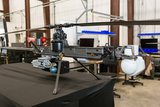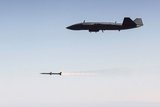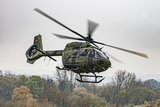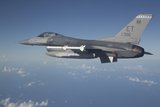Havelsan launches new ISR UAV
Bulut follows Havelsan's Barkan and Baha in joining the inventories of the Turkish Armed Forces. (Photo: Havelsan)
Turkish firm, Havelsan, has announced the launch of the new Bulut UAV for use on intelligence, surveillance and reconnaissance (ISR) missions and in GPS-denied environments.
The new UAV follows-on from its multirole vehicle, Baha, a combustion-powered platform supported by electric motors to enable vertical take-off and landing oeprations. It has now, as reported by Havelsan, been added to the Turkish Armed Forces' inventory alongside that of the country's General Directorate of Security.
Bulut is likewise equipped with an internal combustion engine and an electric motor for take-off and landing. According to the company, it can stay airborne for six hours, has payload capacity of 5kg and can share data up to a range of 80km.
The UAV is also equipped with electro-optical, infrared and laser range-finder integrated camera system and allows for mission control to be transferred between ground controls stations, the company added.
Halvesan is also reportedly working on “different versions” of the Bulut, following its successful test and development of the UAV for ISR missions.
Havelsan general manager, Dr Mehmet Akif Nacar, said: “The SSB [Turkish Defence Industry Agency] and our security forces played a significant role in the development of Bulut. The primary reason why Bulut quickly entered inventory and is now actively used in the field is our team's rapid response to these expectations."
Related Equipment in Defence Insight
More from Air Warfare
-
![Germany acquires additional 20 H145M helicopters]()
Germany acquires additional 20 H145M helicopters
The order for the extra helicopters comes from an agreement penned in December 2023, with the German Army receiving the bulk of the platforms.
-
![US approves potential $4.7 billion missile and air defence system sales to Denmark and Italy]()
US approves potential $4.7 billion missile and air defence system sales to Denmark and Italy
Italy could field the JASSM-ER for its combat aircraft including the F-35, while Denmark has been approved for AMRAAM and an Integrated Battle Command system procurement.
-
![Northrop Grumman to fly new Project Talon CCA by late 2026]()
Northrop Grumman to fly new Project Talon CCA by late 2026
The newly unveiled collaborative combat aircraft looks to strike a balance between capability and cost-effectiveness, according to the company.






















